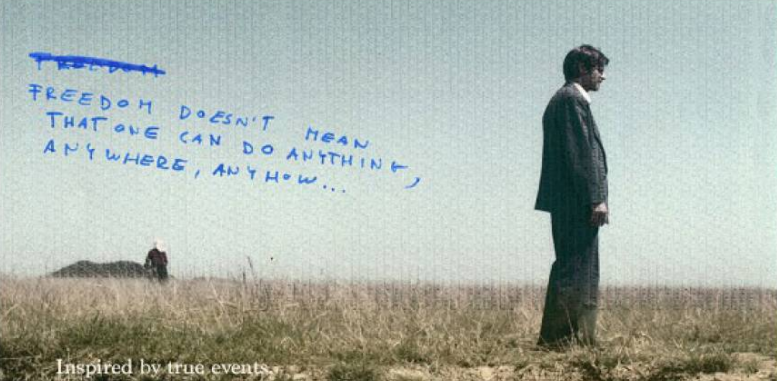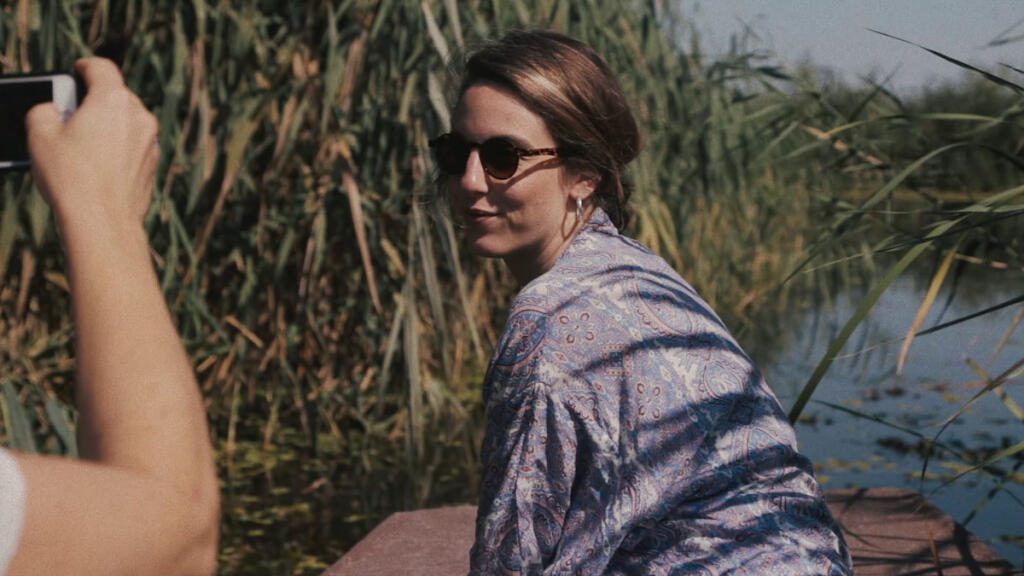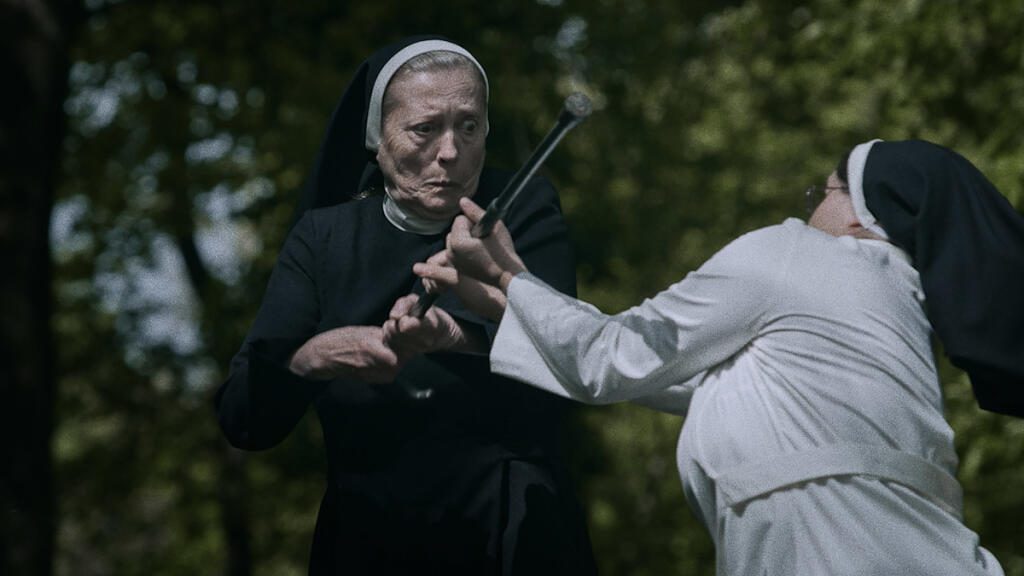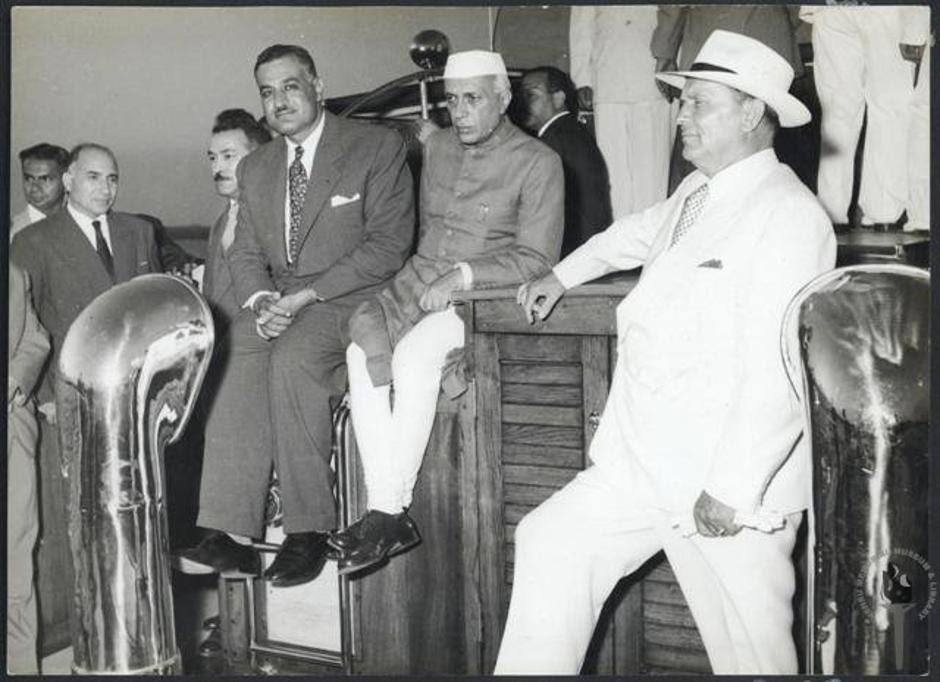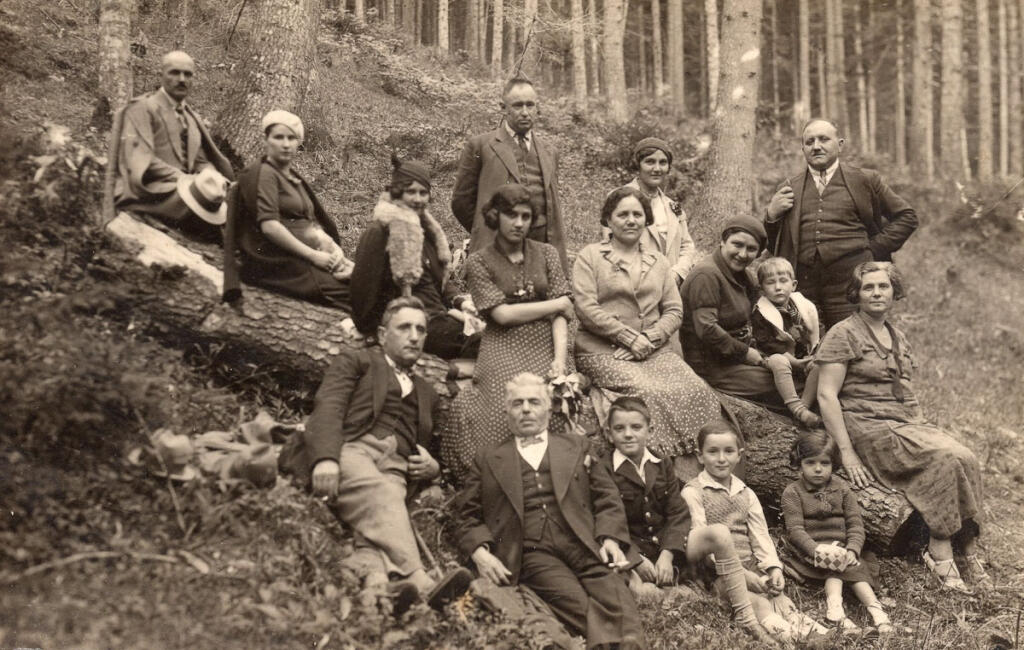SEEfest 2021: Conversations with Filmmakers – Video
Excerpts of Conversations with Filmmakers featured at #SEEfest2021
With filmmakers Marko Dješka, Nicolas Iordanou and Sylvia Nicolaides, Kata Gugić, and Elka Nikolova.
1. ALL THOSE SENSATIONS IN MY BELLY – short animation trailer
While transitioning gender from male to female, Matia struggles to find a genuine, intimate relationship with a heterosexual man.
Filmmaker: Marko Dješka
Interviewer: Casey Shuttuck, intern;
2. AMALGAMATION – short documentary trailer
A soulful portrait of a female choir revisiting traditional songs in a contemporary way, bridging past and present, with a strong voice and deep sense of community and friendship.
Filmmakers: Nicolas Iordanou and Sylvia Nicolaides
Interviewer: Daylyn Paul, intern
3. COCKPERA – short animation trailer
This short opera is inspired by Aesop’s fable The Fighting Cocks and the Eagle.
Filmmaker: Kata Gugić
Interviewer: Casey Shuttuck, intern
Interviewer: Lauren Brown, associate programmer
SUPPORT SEEFEST
In order to help us bring you more SEE programming in 2021, we hope you will consider becoming a SEEfest Cine-Fan member as we continue to bring you the best film and culture from South East Europe.
SEEfest 2021 Awards and Wrap Up – Video
Showcasing the outstanding films and events featured at SEEfest 2021…
The 2021 South East European Film Festival Filmmaker Awards
Andrea Štaka’s Mare wins Best Narrative Feature, and Catherine Harte’s Faith & Branko is named Best Documentary Feature.
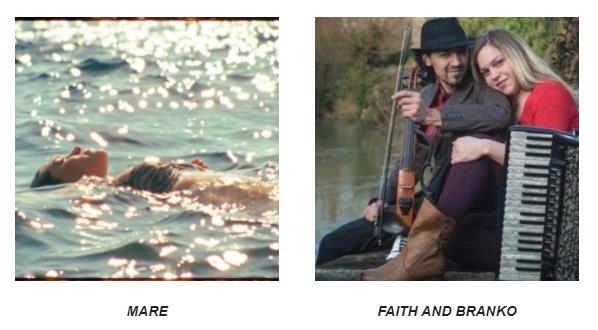 Best Cinematography awards went to In The Shadows’ Hayk Kirakosyan (Narrative), with Nun of Your Business’ Ivana Marinić Kragić’ and That Other Village’s Srđan Kovačević co-winners in the Documentary category. A complete list of awards is here.
Best Cinematography awards went to In The Shadows’ Hayk Kirakosyan (Narrative), with Nun of Your Business’ Ivana Marinić Kragić’ and That Other Village’s Srđan Kovačević co-winners in the Documentary category. A complete list of awards is here.
Audience Award winner: SO, WHAT’S FREEDOM?
The powerful drama about the 1951 deportations in Romania, SO, WHAT’S FREEDOM? by American-Romanian filmmaker Andrei Zinca, was the highest-rated film of SEEfest 2021 and the winner of the festival’s Audience Award. With a score of 88 out of a maximum of 100, this film proved to be an audience favorite in spite of the difficult subject matter and traumatic events from the country’s past.
Accepting the award, filmmaker Andrei Zinca said,
“SEEfest’s audience understands the power of cinema to reach beyond countries, beyond language barriers, and take us to places and experiences in the past that can resonate with us today. “So, What’s Freedom?” was not intended to be just a Romanian story. Freedom, the lack of it, and its manipulation by all political systems has been and still is an everyday and everywhere story.“
Congratulations to the filmmaker, the talented cast and crew, and big thanks to our audience members who judged the films with their votes.
What was your favorite film?
Let us know in the comments which films you liked! We’d love to know.
The 2021 South East European Film Festival (SEEfest) Announces Film Lineup for 16th Edition
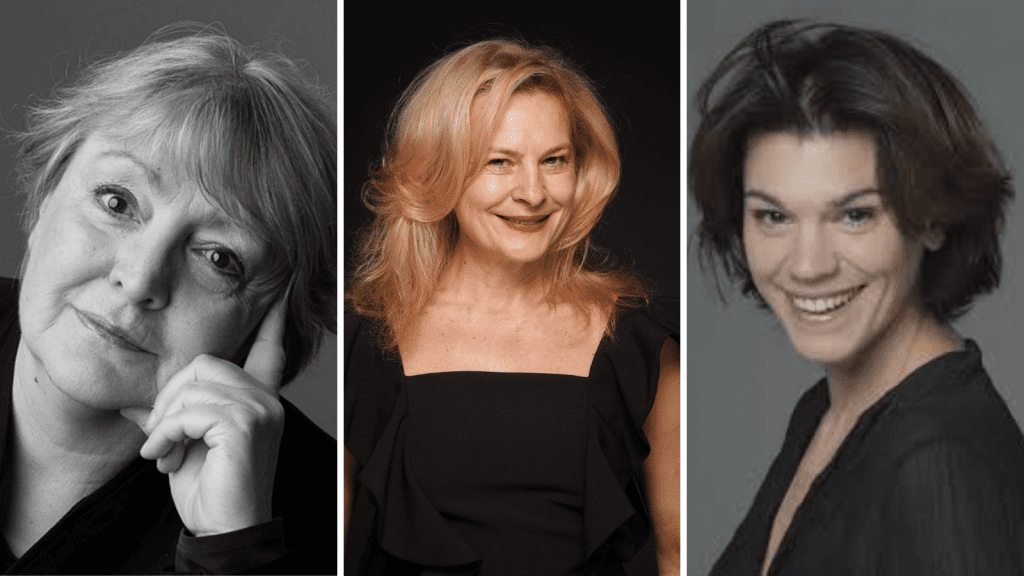
SEEfest Honorees Dubravka Ugrešić (by Shevuan Williams), Jasna Djuričić (by Nebojša Babić) , Marija Škaričić
Award-winning writer Dubravka Ugrešić will receive the SEEfest Legacy Award and Marija Škaričić (MARE) and Jasna Djuričić (QUO VADIS, AIDA?) will both receive the inaugural Legacy Acting Award.
The 2021 South East European Film Festival (SEEfest) (April 28-May 5), co-presented by ELMA, foundation for European Languages and Movies in America, announced the lineup of official selections for the 16th annual edition of the Los Angeles-based film festival. Presenting and celebrating cinematic and cultural diversity of 18 countries of the Balkans and Caucasus to American audiences, the film festival continues to provide a platform in the U.S. for the discovery of new talent from South East Europe.
SEEfest will honor internationally celebrated author Dubravka Ugrešić (“The Age of Skin,” “Baba Yaga Laid an Egg”) with this year’s Legacy Award (April 17) and Marija Škaričić (Mare) and Jasna Djuričić (Quo Vadis, Aida?) with the film festival’s inaugural Legacy Acting Award.
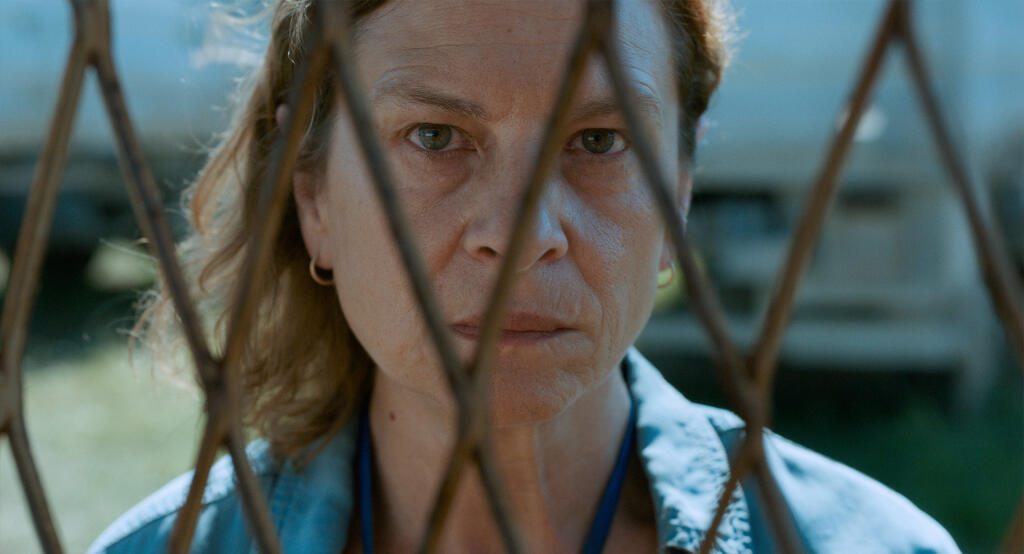
Legacy Acting Award honoree Jasna Djuričić stars in Jasmila Žbanić’s Quo Vadis, Aida?. a 2021 Academy Award nominee for International Feature Film from Bosnia Herzegovina
A true discovery film festival, this year’s virtual presentation is once again rich with premieres, including two world premieres (Elka Nikolova’s A Question of Survival and Kata Oláh’s My Digital Nomad), and two international premieres, Jadran Boban’s That Other Village, and Sidar İnan Erçelik’s Wind Horse. Among the seven North American premieres at SEEfest are Marko Djordjević’s My Morning Laughter, Gjergj Xhuvani’s final feature, My Lake, Ivan Živković’s Galeb (Tito’s Boat), Nebojša Slijepčević‘s 70, Ivana Marinić Kragić’s Nun of Your Business, Bruno Pavić’s Landscape Zero, and Pavel Cuzuioc’s Please Hold the Line. The two films making U.S. premieres are Marija Perović’s Breasts, and Catherine Harte’s Faith & Branko.
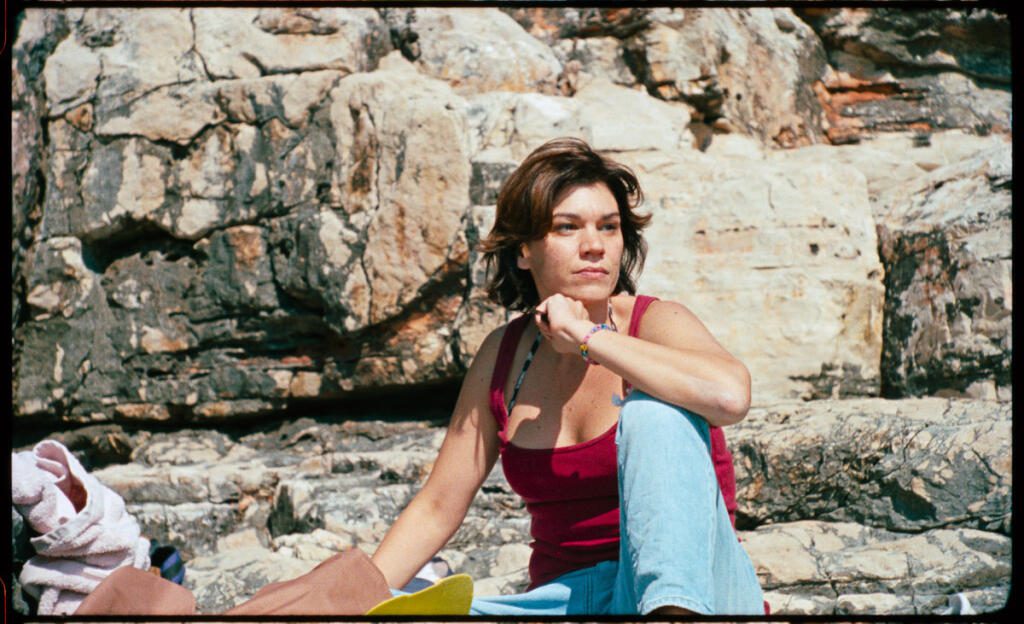
Legacy Acting Award honoree Marija Škaričić stars in two other highly anticipated films among SEEfest’s official selections.
SEEfest Executive Director Vera Mijojlić, said,
“This is another exciting year programming-wise with several films from South East Europe set to make their debut here in the States with our virtual film festival presentation. We are especially excited to host a conversation with our wonderful Legacy Award honoree Dubravka Ugrešić on April 17 and the opportunity to celebrate the great work by Marija Škaričić and Jasna Djuričić, who star in four of our highly anticipated selections, Mare, Breasts, Quo Vadis, Aida?, and My Morning Laughter with the inaugural Legacy Acting Award.”
Making their world premieres at SEEfest will be two documentaries, including Elka Nikolova’s US and Bulgarian co-production, A Question of Survival, which traces the legacy of the Holocaust in the Balkans, as seen through the eyes -and conflicting memories- of three Bulgarian Jewish survivors in New York, and Kata Oláh’s My Digital Nomad, an intimate, first-person documentary from Hungary about the nomadic lifestyle turns into an intimate conversation between mother and daughter throughout countries and years.
SEEfest’s two International premieres include; Jadran Boban’s Croatian film That Other Village about a remote village that changed twice its name, population, and its own history as it continues to be torn by never-ending historical traumas triggering new conflicts; and Sidar İnan Erçelik’s Wind Horse, a poetic Turkish film which tells the story of two shepherds from Anatolia, one of whom becomes a celebrated jockey; the film juxtaposes human desire for success with the toll on the spirit of freedom in both humans and horses.
North American premieres include; Ivana Marinić Kragić’s Nun of Your Business, a Croatian film about two young nuns, driven by their blossoming love, who choose to leave the convent and start a new life together; Marko Djordjević’s My Morning Laughter, a Serbian dramedy about a 30-year-old trying to lose his virginity; and the late Gjergj Xhuvani’s final feature, My Lake, an Albanian drama about a man who has become a small-time marijuana smuggler to support his family.
Following in the tradition of SEEfest films which bring to life world history in a dynamic way is Ivan Živković’s Galeb (Tito’s Boat), a Croatian film which tells the story of the ship that Yugoslav president Tito sailed numerous times, visiting close to 20 countries as he negotiated an alliance of non-aligned countries, the world’s largest after the United Nations. Other North American premieres include Nebojša Slijepčević‘s 70, a documentary about the LADO Ensemble, the only professional folk music and dance ensemble in Croatia.
Bruno Pavić’s Croatian film, Landscape Zero will also make its North American Premiere, as will Pavel Cuzuioc’s Austrian film Please Hold the Line. The former follows the lives of people who are either fighting for their survival among dangerous facilities surrounding their homes or coexisting with them in harmony, while the latter focuses on cable technicians in Eastern Europe as they navigate a modern-day Tower of Babel. One of the 2 films making its U.S. premiere is Catherine Harte’s Faith & Branko, an intimate story that chronicles the cross-cultural relationship between musicians Faith and Branko over seven years.
Legacy Acting Award honoree Marija Škaričić stars in two other highly anticipated films among SEEfest’s official selections. Andrea Štaka’s Mare, a multiple award-winner including the Solothurn Prize, is a Swiss and Croatian co-production about a woman dedicated to her family life, yet always feeling out of place until a chance romantic encounter with a new neighbor just may put everything to the test. Marija Perović’s Breasts, which makes its U.S. premiere, is a light-hearted drama from Montenegro about four friends from high school brought together again at their 20-year reunion, who all are forced to go beyond the usual pleasantries when it is revealed that one of them has become gravely ill.
Fellow Legacy Acting Award honoree Jasna Djuričić stars in Jasmila Žbanić’s Quo Vadis, Aida? a 2021 Academy Award nominee for International Feature Film from Bosnia Herzegovina, the film follows a translator for the UN in a small town taken over by the Serbian army forcing her to use her connections as an insider to look out for the safety of her family and people. Eugen Jebeleanu’s directorial debut Poppy Field follows the struggle of a young Romanian gendarme who tries to balance two opposing parts of his identity: that of a man working in a macho hierarchical environment and that of a closeted gay man. Andrei Zinca’s So, What’s Freedom? is a Romania and U.S. co-production inspired by real events exploring how the lives of a group of people turn when they discover their freedom has become a forced exile.
Click here to preview the complete lineup of films and preorder your tickets.
ABOUT SOUTH EAST EUROPEAN FILM FESTIVAL (SEEfest)
Twice the recipient of the prestigious festival grant from the Academy of Motion Picture Arts and Sciences, and five other awards for programming excellence from the State of California, County and City of Los Angeles, Cities of Beverly Hills and West Hollywood, and Hollywood Foreign Press Association’s festival grant, the festival’s growing list of renowned organizations which now support the festival includes the California Arts Council, Los Angeles County Board of Supervisors through the Los Angeles County Department of Arts and Culture, ELMA Foundation, UCLA Center for European and Russian Studies, Hollywood Foreign Press Association, Blue Heron Foundation, Villa Aurora artists residence, Film & Ink LLC, West Hollywood Chamber of Commerce, as well as a roster of cultural community partners representing the diversity of our State.
South East European Film Festival Los Angeles (SEEfest) is a competition festival presenting cinematic and cultural diversity of 18 countries of the Balkans and Caucasus to American audiences. It provides a platform in the U.S. for the discovery of new talent from South East Europe, with a wide selection of films, art, and literary talks, workshops, and panels. The film festival serves as the cultural hub and resource for scholars and filmmakers, and creates opportunities for cultural exchange between Hollywood industry professionals and filmmakers from South East Europe. It is a 501 © 3 non-profit, public benefit corporation. For more information, visit https://seefilmla.org/.
The Legacy of the Non-Aligned Movement – The Dream of Peaceful Coexistence and Encouragement of Cultural Diversity
Did you know that the 1st Conference of the Non-Aligned Movement took place right in the heart of South East Europe?
The Non-Aligned Movement (NAM) was formally established nearly 60 years ago—in one of the regions our festival covers—Belgrade, in today’s Serbia, then the capital of Yugoslavia. The first official conference of the non-aligned countries took place in September 1961, with 25 countries participating.
In short, NAM was founded during the Cold War by leaders from countries that aimed to establish the principle of peaceful coexistence and remain non-aligned with either of the two power blocs—the United States and the Soviet Union.
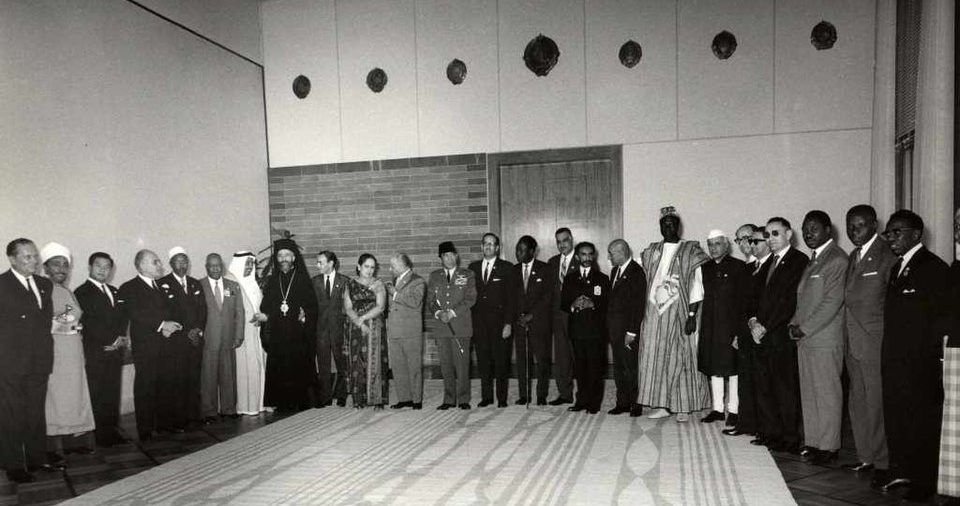
Leaders of the Global South at the Belgrade Summit 1961, © Museum of Yugoslavia, Belgrade
“In September 2021 we mark the 60th anniversary of the Belgrade Conference of the Non-Aligned Countries. Recent academic meetings and exhibitions (like the one held in 2019 at the Wende Museum in Los Angeles, titled Nonalignment and Tito in Africa) have at long last blown open the lid of inquiry on an important historical period and movement which offered an alternative approach to global affairs. Non-aligned movement forged previously unthinkable geographical alliances and challenged bi-polar global policies of the time. We need to explore Non-Alignment from a humanist, cultural, and public diplomacy angles, similar to what the world is trying to do today with a global agenda on climate change”, says Vera Mijojlić, founder of SEEfest.
Let’s take a look at the initial steps that led to the formation of NAM—which is the largest grouping of states just after the United Nations—and look at the deeper implications of how this movement worked toward peaceful coexistence.
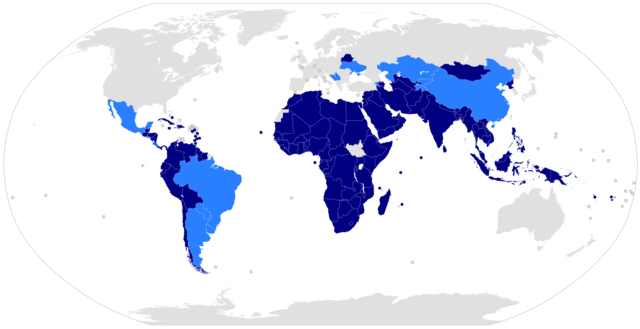 To begin, the Cold War is directly responsible for the emergence of the terms, “first world”, “second world”, and “third world” —the western and eastern blocs, and the nations that decided to stay outside of these blocs.
To begin, the Cold War is directly responsible for the emergence of the terms, “first world”, “second world”, and “third world” —the western and eastern blocs, and the nations that decided to stay outside of these blocs.
Alfred Sauvy, a French demographer coined the term “third world” in his 1952 article, “Three Worlds, One Planet”. The “first world” was meant to refer to the United States and its democratic-capitalists allies like Western Europe, Japan, and Australia; and the Eastern bloc, the Soviet Union and “its Eastern Europe satellites” were considered the “second world”. The “third world” then comprised of the nations that chose to be non aligned, and which were also considered underdeveloped as many had just recently won independence from their European colonizers, like nations in Africa, Asia, the Middle East, and Latin America.
In 1955, twenty-nine government representatives from Asian and African countries—representing nearly 54% of the world’s population—met in Bandung, Indonesia at what would become known as the Bandung Conference, “to discuss peace, and the role of the third world in the Cold War, economic development, and decolonization.”
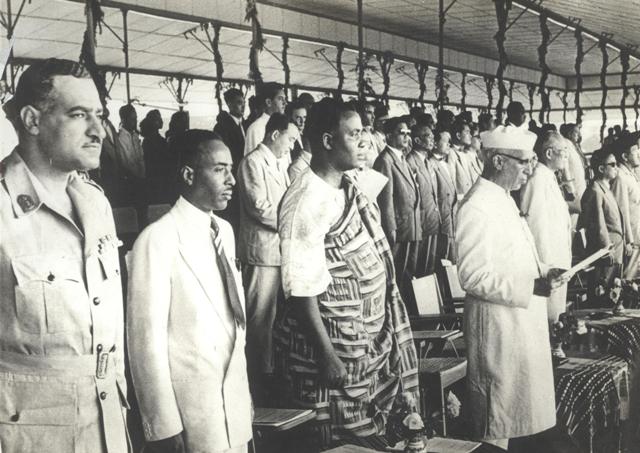
Asian-African Conference at Bandung, April 1955
These nations called upon the meeting out of the frustration and alienation they felt as the non-aligned “third world” and decided to come together to dispel colonization through their unity and support for one another as well as their advocacy for other nations that were still under colonial rule.
It was at this conference that they established and signed a communique of the principles they would stand by, which included: “the promotion of economic and cultural cooperation, protection of human rights and the principle of self-determination, a call for an end to racial discrimination wherever it occurred, and a reiteration of the importance of peaceful coexistence.” (Office of the Historian)
These principles and their concept of banding together to support one another economically and culturally laid a lot of the groundwork for the Non-Alignment Movement. They figured as a majority of them were newly freed of their colonial ties, they would use this unity to build one another up through peaceful coexistence, the dismantlement of colonialism and racism, and the promotion of diversity.
SEEfest promotes cross-border cultural diversity
Promoting lesser-known regions, their history, heritage, and their cultural diversity through film, literary and cultural events is at the core of SEEfest, a cultural festival that “pioneered the concept of regional, cross-border programming with issue-driven films that tell a larger story about South East Europe (…) by presenting multiple points of view from this troubled region,” to quote from the festival’s mission statement.
On the occasion of the historical 60th anniversary of the first NAM conference, we look back at the world as it was then, and how a small country in the heart of South East Europe, only recently freed from the oppressive dominance of the Eastern bloc, took center stage in hosting a meeting of Asian, African and Latin American countries. Aside from politics, this conference would have a lasting cultural influence on people and artists of Yugoslavia: from The Museum of African Art, the first and only museum in the region entirely dedicated to the cultures and arts of the African continent, to several recent documentary films about NAM and upcoming magnum opus by acclaimed filmmaker Mila Turajlic, “The Labudovic Files” about the cameraman who filmed not just the leaders of the movement but preserved on film living history and cultural traditions of many nations.
“We look back at the main protagonists and at what deep sense of solidarity Tito was able to instill wherever he went on his extensive travels. There is strong evidence of trust between Nonaligned nations — something not only completely absent from but pretty much unthinkable in our present world,” says Vera Mijojlić, founder of SEEfest.
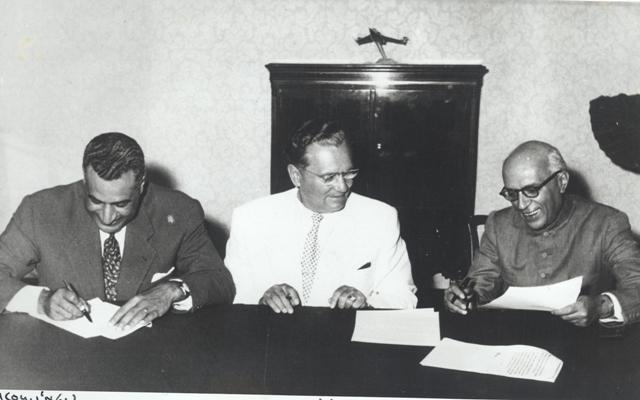
From Left to Right: Gamal Abdel Nasser, Josip Broz Tito, and Jawaharlal Nehru
NAM was headed by the president of Yugoslavia, Josip Broz Tito; the President of Egypt, Gamal Abdel Nasser; and the first Prime Minister of India, Jawaharlal Nehru.
Josip Broz Tito, who played a pivotal role in the movement, achieved something no other Eastern European nation succeeded in doing until the fall of the Berlin Wall: he managed to distance Yugoslavia from the Soviets and retreated from the USSR-led alliance in 1948. As stated in Non-Alignment and Tito in Africa, Tito defied “Soviet hegemony to launch (Yugoslav) own program of socialist development.”
Through his foreign policy and anticolonialism, Yugoslavia strengthened its ties and influence in the ‘third world’. Tito’s legendary travels to Africa, Asia, and Latin America have been well documented on film, primarily by the state-funded newsreel service Filmske Novosti. The company still exists and serves as a treasure trove of unique archival material for scores of young filmmakers, scholars, and media organizations throughout the world.
Extensive travels and Tito’s meetings with leaders of non-aligned African countries led to “economic packages, military aid, technical support, and cultural and academic exchanges, it helped build factories, power plants, ports, hospitals, and research facilities in numerous African countries. In return, Yugoslavia gained access to African raw materials and new markets to trade its surplus consumer products.” (Non-Alignment and Tito in Africa)
Tito also strengthened Yugoslavia’s ties with other third-world countries in South America, notably with Mexico, and this, in turn, introduced Mexican films from the golden age to Yugoslav audiences across the country. This then led to the 1950s-1960s “Yu-Mex” craze, when Mexican music became so popular in the region that many Yugoslav musicians began covering traditional Mexican music. The documentary film by Miha Mazzini, “Yugoslav Mexico” from 2013 is dedicated to this cultural phenomenon.
Another notable thing Yugoslavia did under Tito’s leadership was aid the third world in anti-colonialist movements, and it was the Yugoslav delegation that first brought the demands of the Algerian National Liberation Front to the United Nations.
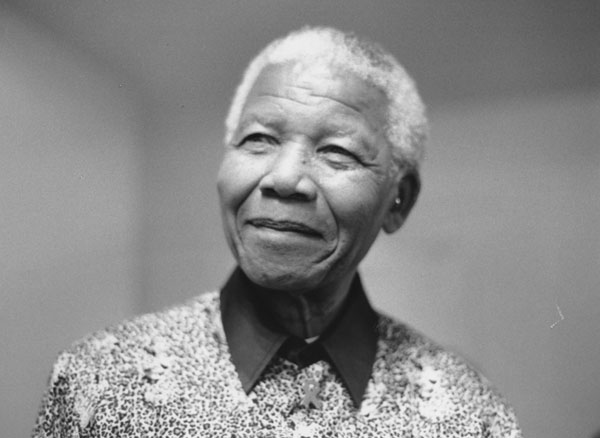
Nelson Mandela
Later, another important figure that would serve as a Chair of the Non-Aligned Movement would be President Nelson Mandela. From September 1998 to June 1999 he served as NAM’s 19th Secretary General. After the 7th NAM Summit of 1998, he relayed the discussions and outcomes the group had to the United Nations General Assembly during their 53rd session.
SEEfest will continue to highlight this, and other influential historical and cultural milestones of South East Europe. Stay tuned for the next update!
Post your comments and memories of this historic event below. And be sure to sign up for the SEEfest News so you don’t miss important announcements about the annual Festival!
Exploring The Adriatic Coast of South East Europe
Often considered among the most beautiful waters to see and swim in, the Adriatic Sea is an integral part of life in South East Europe, specifically in Croatia, Slovenia, Montenegro, Albania, and Italy, whose borders run along the Adriatic coast.
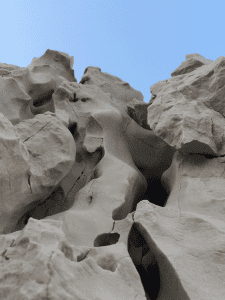 One of the Adriatic coast’s striking features is the white stone which marks the ever-shifting boundary between land and sea. Near the water, the stone is encrusted with shells and barnacles, colored brown with seaweed and centuries of erosion. Farther from the shore the stone is pale, textured with indentations, and laced with cracks and schisms. Rosemary bushes and pine trees are found close enough to the shore that their branches hang over the water, creating shadowed nooks and clusters of pine needles among the rocks.
One of the Adriatic coast’s striking features is the white stone which marks the ever-shifting boundary between land and sea. Near the water, the stone is encrusted with shells and barnacles, colored brown with seaweed and centuries of erosion. Farther from the shore the stone is pale, textured with indentations, and laced with cracks and schisms. Rosemary bushes and pine trees are found close enough to the shore that their branches hang over the water, creating shadowed nooks and clusters of pine needles among the rocks.
On sunny days, sailboats and ferries dot the horizon, along with smaller fishing boats, especially near villages. Ferries carry the local inhabitants of the islands to and from cities, and during the summer they run every few hours. The sea is also home to over 7000 plant and animal species and is so clear that while swimming one can see the fish, either lurking near the seafloor or else darting synchronously through the waves in schools.
Some jump above the surface, a quick gleam of silver in the sunlight before disappearing underwater again. Squids, crabs, dolphins, and other common marine wildlife are also found in these waters, and there are rarely any large or dangerous creatures, though the occasional lost fin whale or young shark appears while searching for a way back to the Mediterranean.
In recent years, concerns about threats to marine ecosystems in the Adriatic have grown, including worries about overfishing and pollution; these are the same problems plaguing coastal environments all over the world right now. Poor waste management and carelessness from tourists has led to trash floating in the sea and washing up on shores, which in turn affects the wildlife.
Although it is still safe to eat fish from the Adriatic, pollution may change that in the future. Moreover, of the over 450 fish species identified in the Adriatic, about 60 are considered endangered or nearly endangered, according to various red lists on endangered species in the Mediterranean and Adriatic.
Pollution concerns are exacerbated by commercial endeavors, especially cruise ships, which have become a frequent sight in ports. Although they bring tourists and therefore business, the environmental damage to the coast has caused many to question them and look for alternatives, such as more 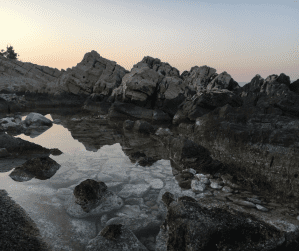 traditional-style ships which can also carry tourists between Adriatic islands and cities. Split and other large coastal cities have a rich history of flourishing shipyards and capable sailors, and have produced all kinds of vessels. Their older ships have a long history, such as the Polaris, which travels between Split and several nearby islands. Polaris has been run by the same local family for decades and its existence stretches back to World War II. Although its exterior has been restored and rebuilt over the decades, it nevertheless carries history in its foundations as it continues to sail through the Adriatic.
traditional-style ships which can also carry tourists between Adriatic islands and cities. Split and other large coastal cities have a rich history of flourishing shipyards and capable sailors, and have produced all kinds of vessels. Their older ships have a long history, such as the Polaris, which travels between Split and several nearby islands. Polaris has been run by the same local family for decades and its existence stretches back to World War II. Although its exterior has been restored and rebuilt over the decades, it nevertheless carries history in its foundations as it continues to sail through the Adriatic.
As with every coastal region, the priority is to preserve and find a coexistence between the natural environment and our own interaction with it. From its storms carrying heavy winds and salt, to its days of pristine tranquility under the sun, the Adriatic is a force of its own, always shaping the landscape and the homes we have built beside it.


